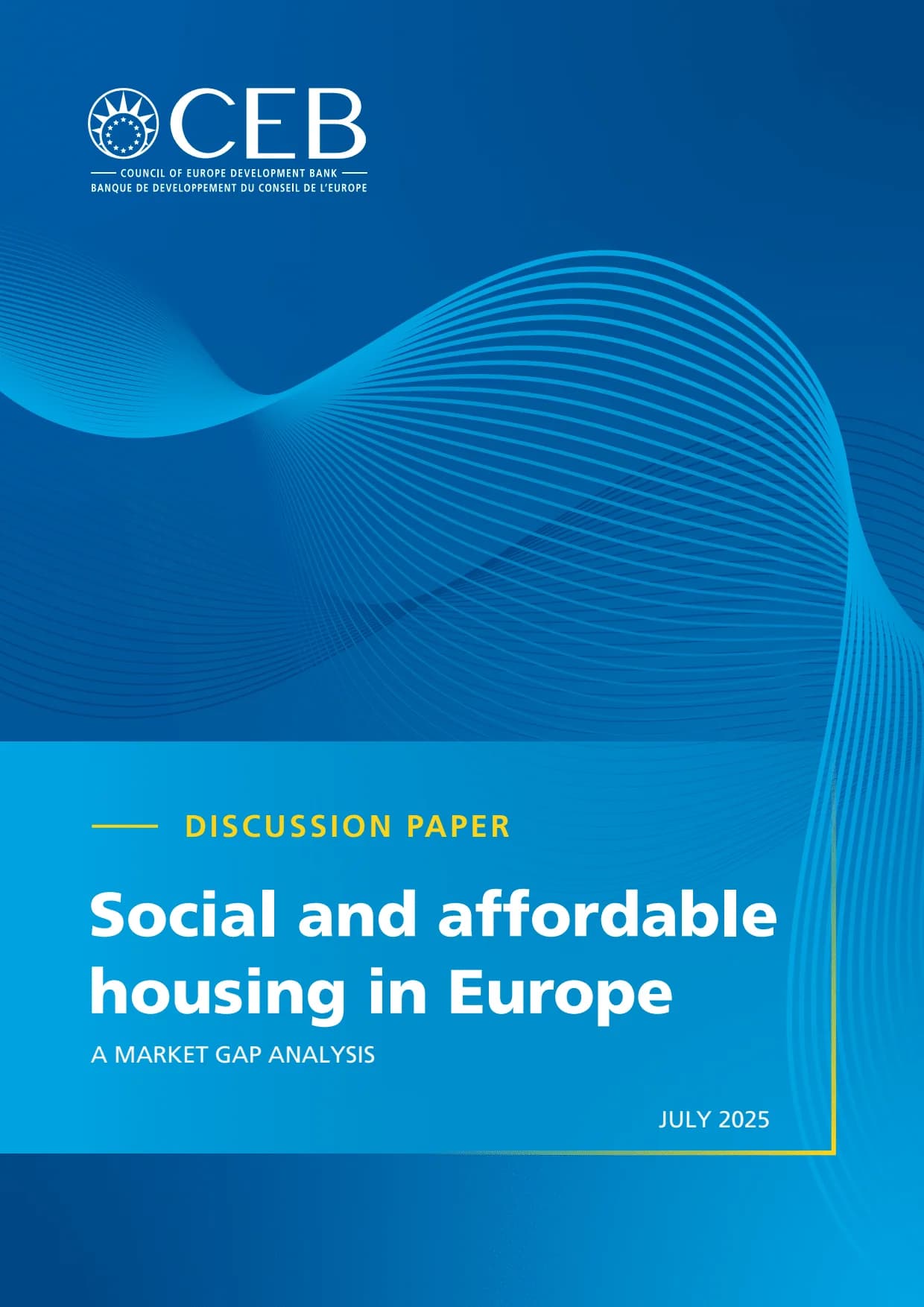AI-Generated Summary
Learn moreContext and Purpose
The document titled "Social and affordable housing in Europe: A market gap analysis" is a publication by the Council of Europe Development Bank (CEB), a multilateral development bank focused on social mandates from its 43 member countries. The authors, Leonardo Porta and Florian Meyerhoefer, work within the CEB's Loans & Social Development Department. This analysis aims to identify market gaps in social and affordable housing across Europe, emphasizing the importance of tailored policy interventions for vulnerable populations.
Key Findings
The analysis reveals significant regional disparities in social and affordable housing markets. Northern Europe faces high demand and low vacancy rates, leading to unaffordability, particularly in urban areas. In contrast, Southern Europe's economic stagnation hampers housing investment, while Central and Eastern Europe struggles with low construction activity and housing deprivation. The report highlights that the right to housing is enshrined in the European Social Charter, yet fulfilling these commitments remains a challenge.
Demand and Supply Dynamics
Between 2012 and 2019, demand trends varied across Europe. Northern Europe saw steady population growth and increased household numbers, pushing up housing costs and rental competition. Southern Europe experienced more households but slower population growth, creating pressures in cities like Lisbon and Paris. Conversely, Central and Eastern Europe exhibited robust urban demand despite overall declining populations.
Housing supply also displayed marked regional disparities. Northern Europe generally enjoys high construction rates but faces challenges from low vacancy rates and stringent rent controls. Southern Europe shows varied construction activity, with countries like France investing robustly, while Greece and Portugal lag behind. Central and Eastern Europe continues to experience low construction rates, exacerbating housing deprivation.
The Impact of COVID-19
The COVID-19 pandemic had profound effects on the housing market. Immediate impacts included low interest rates that drove housing demand. Fiscal aid programs supported households but often failed to address deeper structural inequalities, leaving low-income households vulnerable. The shift to remote work further altered housing demand patterns, pushing interest towards suburban and rural areas as families sought more space.
Recommendations
The report concludes with several policy recommendations to address the identified gaps. First, it emphasizes the importance of creating and preserving affordable housing units, particularly in high-demand areas of Northern Europe. Second, it calls for aligning housing supply with local market conditions to mitigate supply bottlenecks. Third, improving access to affordable housing in the private market is crucial, especially for regions facing significant supply pressures. Lastly, protecting against displacement and ensuring housing stability in urban centers is essential.
Conclusion
Overall, the CEB's analysis illustrates the complexities of the European housing market and the urgent need for targeted interventions. By focusing on regional characteristics and leveraging international financial support, it aims to create inclusive and resilient housing markets across Europe, vital for promoting social cohesion and improving living standards for vulnerable populations.
